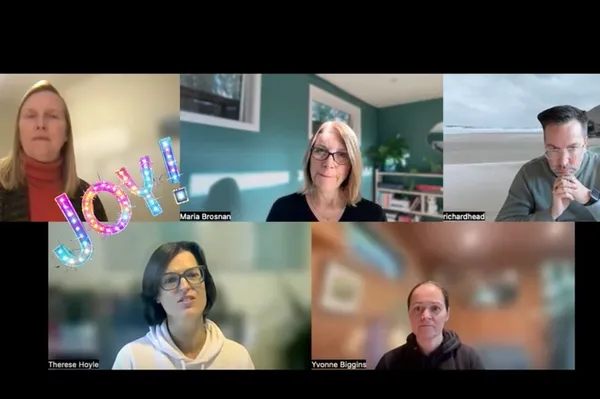Fantastic news - you’ve decided to embrace whole school change and introduce a new, strategic, Whole School Approach to Emotional Wellbeing and Mental Health.
But what does this mean for staff and wider stakeholders and what do you need to consider?
First let’s pull the term ‘strategic change’ apart -
To almost anyone you ask, a “strategy is a plan” 1. It’s a purposeful plan, made in advance. There are of course far more complex ways of defining this but run with this…it’s simple!
Change is, of course, to make something different. Wider than this, it’s to alter or modify, or it can be the act or process through which something becomes different itself 2.
So, Strategic Change is your purposeful plan to do something differently.
Secondly let’s consider what we mean by a Whole School Approach. “Many schools are involved in whole school professional learning or have activities that are school wide. These terms are similar but not the same as the specific meaning given to the term “Whole School Approach”. A Whole School Approach thinks about a school as a multidimensional and interactive system that can learn and change. Thus a Whole School Approach is a systems-based or ecological way of viewing a school.” 3.
There are numerous change planning ‘models’ that we can implement to influence our Whole School Approach, but we’d strongly suggest one that focuses on people rather than process. An adaptation of Kotter’s 8-stage model4 gives us a great place to start:
1. Create urgency
Use a clear, powerful narrative that captures the need for change.
School leaders must help their team understand why change is necessary and what will happen if the organisation does not change. This step is critical because it creates a sense of urgency and helps employees understand the importance of change.
Link this to your Why! Why do you do what you do?
Check out Sinek’s ‘
Start With Why?
’ for inspiration.
When it comes to Emotional Wellbeing we arguably don’t need to create a sense of urgency, we just need to communicate it. The evidence for changing our approach to emotional health and wellbeing is overwhelming - see
here
for informative and compelling facts about the challenge we face. We do need to understand how the evidence impacts our setting and make it relevant to our staff and can use our school data, including that from Motional Groupshots, and the Organisational Snapshot to support this.
Use storytelling to communicate this powerfully.
2. Build your coalition
Create a guiding coalition. This involves assembling a group of influential people who can help drive change. Don’t be tempted to focus on your senior leaders. This group should include a range of stakeholders from different levels within the organisation - think Governors, SLT, Staff, Support Staff, Parents and your children/young people themselves.
It’s incredibly valuable to have a diversity of perspectives within your Coalition, which means drawing from a diverse pool of people and viewpoints.
Mobilise this task force and empower them to lead the change.
3. Refine your vision
Shape a clear and compelling vision for the future and a strategy for achieving that vision. The vision should be inspiring and motivating. The strategy should be practical and achievable, with allocated responsibilities and timeframes.
The most effective way to develop a vision and strategy is to involve your guiding coalition and other stakeholders in the process. Leaders can hold brainstorming sessions and workshops to gather ideas and create a shared vision. The guiding coalition can then develop a strategy for achieving the vision and communicate it to their colleagues and fellow pupils/students.
It’s critical at this stage to engage with the whole business in exploring how this vision can be applied practically. Change often fails when the strategy has been designed behind closed doors without the involvement of the wider stakeholders in the organisation.
Remember - Motivate through vision - activate through strategy.
4. Communicate
Leaders must create a clear and compelling message that resonates with staff and students/pupils alike and helps them understand the importance of change.
One effective way to communicate the change vision is to use multiple channels, such as
- your school website
- newsletters
- hall meetings
- social media.
Be creative, why not try
- announcements at school plays & events
- integrating within business-as-usual communications
- Add as a standing agenda item to Governors' meetings and Parent/Friends of the school groups.
Communication is multi-directional. Be prepared to answer questions and build routes for feedback and discussion. Leaders should also provide regular updates on the progress of the change initiatives and address any concerns or questions from employees.
Build powerful two-way communication.
5. Empower
Empower your team. Remove barriers and obstacles that prevent your coalition and your wider team from taking action.
Leaders must provide the necessary resources, training, and support to enable change and give them ownership of the process.
Delegate tasks and responsibilities; provide the necessary resources and support to succeed.
6. Celebrate Short-term Wins
Recognise and celebrate small successes along the way. These quick wins demonstrate progress towards your shared vision. They will also build momentum and energise your team to continue the change you’re now all aiming to achieve. Reward with things that benefit the team as a collective.
Recognise, celebrate and reward quick wins.
7. Consolidate
Don’t let the quick win be your definition of success. It isn’t. You’ve taken your successful first steps. This is the time to use that to reinforce the change, gain more feedback, tweak the strategy if necessary and reinforce the vision Then add more change!
8. Anchor
Anchoring involves embedding the changes into the organisation’s processes to ensure that they are sustained over time.
Incorporate the changes into your organisation’s policies and procedures and double down on your training. Reward and recognise the team who embody your new shared approach and the establishment of a shared new culture.
The Motional Organisational Snapshot and Action Planning Tool
This is included for any setting using Motional as part of a Whole School Approach. This enables you to:
Capture valuable insights from key stakeholders (Governor, SLT, Staff, Support Staff) across various domains encompassing Leadership and Management, Environment and Ethos, Policy and Practice.
This, along with your Motional Whole School Data will support you to create that Sense of urgency.
Construct a 'Development Plan' and allocate responsibility, incorporating suggested actions, evidence sources, and reflective questions tailored to your team's needs.
The Action Planner provides the structure that will support you to Build your coalition, Set and refine your vision, and empower your team.
Document your progress over time by uploading evidence showcasing Intent, Implementation, and Impact, providing a comprehensive record of your organisation's growth.



